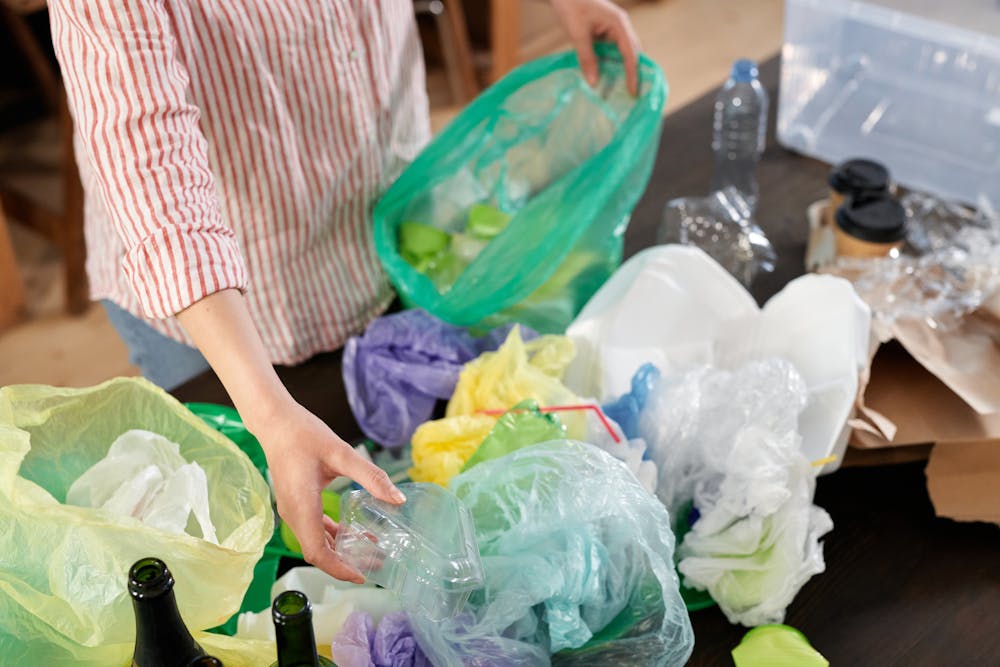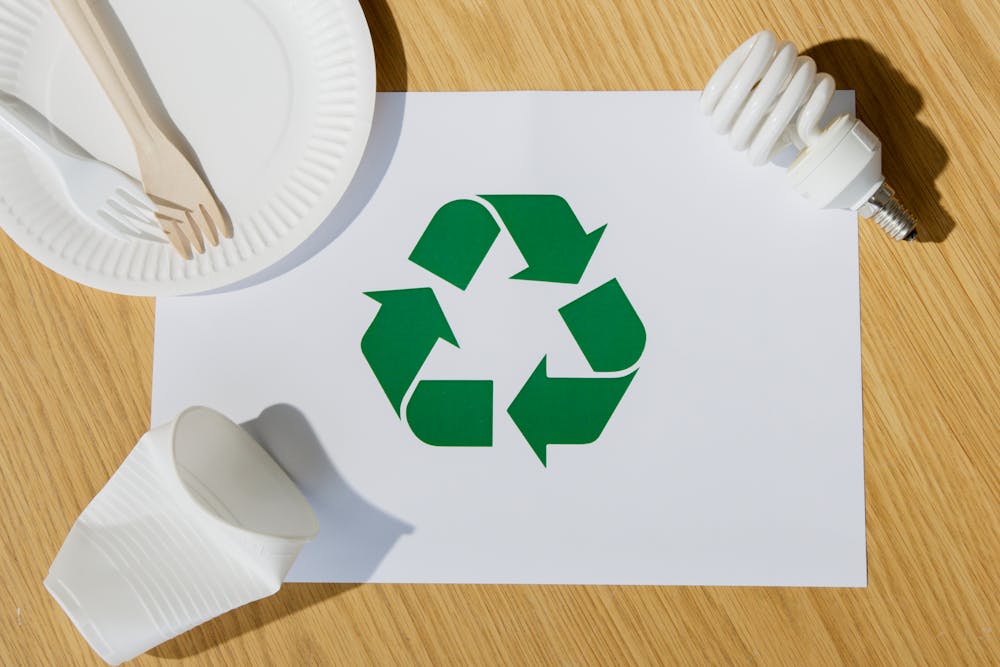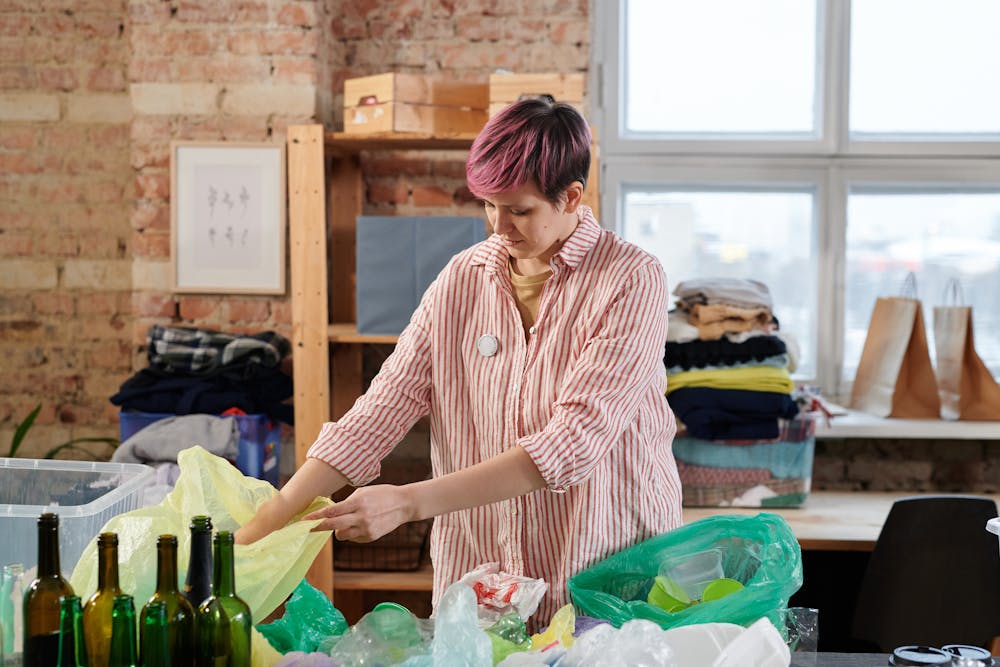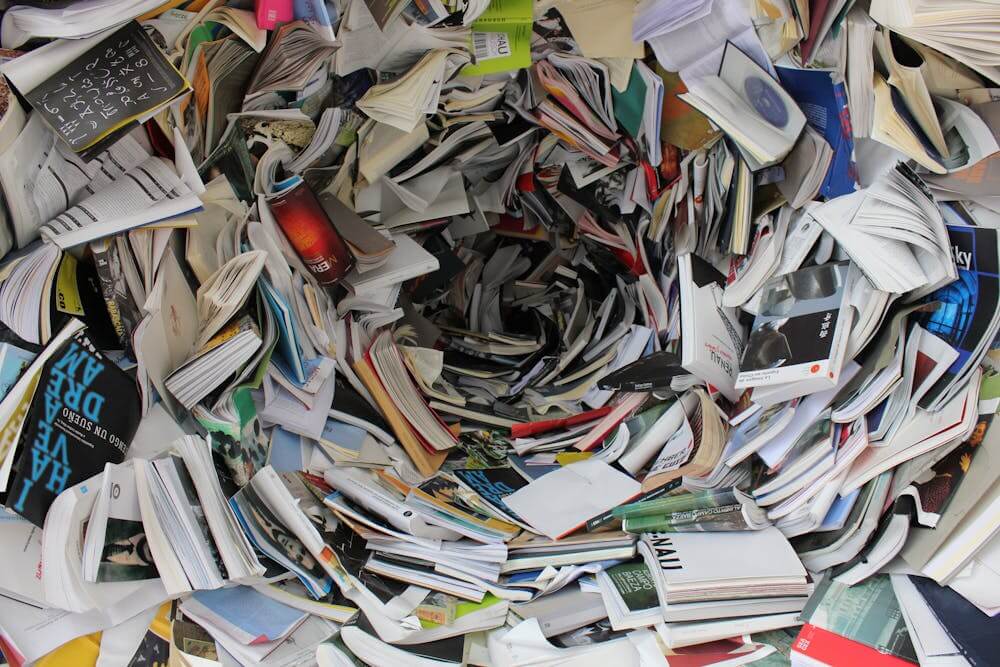The best way to reduce waste is to avoid throwing too much into the waste system. Much of what goes into the landfill doesn’t need to be there. Kitchen waste, green waste, and paper comprise a considerable percentage of the rubbish in a landfill, which can easily be recycled or composted.
I bet you haven’t thought about this. By reusing and recycling stuff you don’t need, you actually help protect the environment. Not to mention that you give new life to things that would have stayed unused in a corner of your home. If everybody does his bit in his local area, the effect will spread across the whole planet.
One of the more essential parts of “acting locally” to do your bit towards helping Planet Earth is reducing waste. You are probably aware of the adverse effects of landfills: more and more valuable land being taken up just by rubbish and the associated problems of groundwater being contaminated by leachate. Yes, the people who design landfills take leachate into account, but do you want to take this risk?

First Steps Into Recycling
But there’s more to recycling than dropping your old newspapers off at the local paper recycling depot and putting lawn clippings and carrot tops into a compost heap. As we all know, the three Rs of waste are Reduce, Reuse and Recycle. The “reuse” stage is one that often gets overlooked.
Reusing some items is straightforward. A sip-top bottle that once held bottled water can easily be refilled from your regular drinking water supply – or with fruit juice. Glass jam jars can be washed out and used for storing dry goods or making jams and jellies. Ice cream containers (and anything else with an airtight lid) are perfect for freezing items or lunch boxes. Gift wrapping paper can be used multiple times before it’s too battered and neglected to use. And if you don’t use items this way, there’s bound to be a charity that will!
After reusing the obvious things in obvious ways, it’s time to get creative. Things don’t have to be reused for the purpose that they were originally made. Here are just a few suggestions that have worked for me:
Small yoghurt containers: holders for paper clips or drawing pins, pottles for starting seedlings before planting.

Creative Recycling Ideas
- Large clear plastic drink bottles: Cut the spout off and use as a cloche for winter vegetables (use the cut-off spout as a funnel)
- Drink bottles with handles (e.g., milk bottles): Cut in half and use as scoops for washing powder, sugar, flour, or garden fertiliser.
- Mesh bags made from onions or oranges can be rolled into a ball and used to scrub pots. My recycled pot scrub lasted much longer than a conventional Brillo rotten or steel wool scrubber.
- Pizza boxes are the perfect size for holding A4 papers. They are suitable for documents, kid’s drawings, or even old letters (the pizza scent will evaporate before long).
- Old clothes: Cut off buttons and zips before using the cloth as dusters, dish rags, or polishing cars.
- Old sheets: These usually have a lot of good fabric on either side of the rip that inevitably happens – this can be remade into pillowcases or even children’s pyjamas.
- Old towels: used for pet bedding or as a biodegradable weed mat.
- Old stained carpet: weed mat, pet bedding or in the garage for your amateur car mechanic (most families have one of these) to lie on while tinkering underneath a car.
- Ice cream containers and one-litre yoghurt containers: organisers for children’s crayons, felt tip pens, play dough, and stamps.
- Anything thin and shiny: children’s art projects and collages.
- Old rubber gloves: cut up for thick, durable and colourful rubber bands.
- Instead of throwing flat beer down the drain, use it as a slug and snail bait. Bury a container (e.g. a jam jar, margarine container or old Marmite jar – another form of reusing) so that the top is level with the ground. Fill it with flat beer. The slugs and snails will be attracted to it and slither in to drown. Alternatively, flat beer is supposed to be good for the hair – all those B vitamins from the yeast and malt – so it can be used as a hair rinse.
- Old cotton reels can be used for doorstops. Alternatively, they’re great wooden blocks for kids. Larger ones are safe for babies – too big to swallow. A third use for old cotton reels is to nail two on the wall with enough space in between for a broom handle – the broom head will rest on the reels so you can store it easily.
- All sorts of things can be cut up to make guitar picks. Old credit or EFTPOS cards and ice cream containers are good old favourites for this.
- An old split garden hose can be used as a sprinkler system. Punch a few more holes to water all your garden at once.
- I know a Church of England vicar cuts up ice cream containers for clerical collars (the traditional “dog collar”) instead of buying new ones if one breaks or gets lost in the wash. He also has been known to use a white plastic toothpaste tube, inserted with the inside (white) side showing. Don’t inundate your vicar with ice cream containers, though – ask first. That being said, ice cream containers are great for frozen food, so it may be helpful if your local church (or any other organisation, for that matter) has a food bank.
- If you haven’t already composted the orange peel, dry it and use it as potpourri or a moth repellent in your wardrobe. You can also check the peels during regular domestic cleaning and remove the old ones.
- If wet inside, old plastic bags can be stuck into Wellington boots to stop your socks from getting soaked. You can also use them as a waterproof lining inside hiking boots, but your feet will get sweaty.
- Egg boxes (cardboard) are great for starting seedlings. Plant seedlings into each compartment. When the plant is big enough, cut up the egg box and plant it directly. The cardboard will rot away as the plant grows. Larger cardboard cartons can be used similarly—ensure they aren’t plastic-coated.
- The top of soft drink bottles makes an excellent funnel.
- Old shower curtains can be made into small tablecloths or for babies’ bibs. Alternatively, use it to make a rain cape or poncho.
- Those irritating plastic rings attached to the bottom of nearly every bottle with a screw-off lid make good bubble wands. Pin one part of the ring into a point and stick it into a straw. The bigger the ring, the bigger the bubble.
- Fishing enthusiasts can use old pantyhose as an attractant. Fill the toe with cat food or some other nice, smelly bait and dangle it in the water before putting your hook in. This also works for attracting eels.
- If a boy’s trousers have holes in the knees, cut the legs off and let him wear them as shorts. The same applies to adults’ clothing.
- Save old, holey jeans to make patches for other jeans. Denim is good and strong and can be used to patch most things.
- Thick cardboard can protect CDs (-ROMs) in the post instead of bubble wrap. Keep a small supply on hand, but don’t hoard it—it can build up to excess if you’re not careful.
- Screw-top jars (glass or plastic). Wash them out and keep them for your homemade jams and pickles. Or for storing things like cornflour and cocoa. Or for storing homemade cleaners and bath salts.
- Zip-lock bags. Does anyone throw these useful things away? You can use them for smaller batches of frozen food and school lunches.
- Rubber gloves. Once the fingers have holes, cut the wrist parts up for extra thick, strong rubber bands.
One warning: don’t hang onto an item just because it might be useful for something. After a lifetime of this principle, I had to clear up my late grandmother’s house, which was chaotic (well, can you think of a use for old trays from airline meals?). If you can’t think of a use, even with your best efforts, recycle the item if possible or throw it away as a last-ditch resort. You can only use so many flour scoops and funnels.
Pass Along: Let Other People Reuse Your Old Stuff
Don’t forget that the “reusing” can be done by other people. If you no longer need an item in good condition, don’t throw it into the tip. If possible, sell it on eBay or a similar site, hold a garage sale, or give it to charities. Even ripped old clothing can be given away to charity organisations – these get shredded for reuse (as carpet underlay and stuffing or even in paper manufacture) or sent to manufacturing plants to clean machinery – soft old T-shirts and sheets are perfect.
This last point may seem like a statement of the obvious, but it’s astonishing how many people throw perfectly usable things into the tip. At my local tip (aka resource recovery centre), you are charged by weight for rubbish disposal (they weigh you going in, then you going out). The few times I’ve gone in, I’ve almost been able to pick up enough good stuff from other people’s waste to reduce my tip fee significantly. And I’m sure that if I waited long enough, I could drive out heavier than I came in. Yes, it takes a bit of nerve to ask a perfect stranger, “You’re not going to throw that out, are you? Can I have it?” but most people don’t mind. Items I’ve scored this way include:
- A near-new pillow
- A child’s bicycle
- Skis
- A single bed and wallpaper perfect for card making
What can you find?
Donate
If you want to do things, take the lot to a charity dealing with the rag trade/scrap metal. They’ll sort out and resell the excellent stuff, recycle what’s junk, and make money for a good cause. If you’re unsure what items a charity will take, phone up and ask first. Some organisations prefer certain kinds of items. For example, Dress for Success is always looking for business clothes for disadvantaged women returning to (or entering) the workplace. Like many other religious-affiliated charities, the Salvation Army takes clothes, old appliances, and furniture. Several charities also take old computer gear – an online search finds these easily, and some take other appliances, such as fridges or fluorescent bulbs, for recycling.

How To Recycle Old Paper Documents
Recycling is easy if you’re getting rid of old papers. However, if you’re turfing out old bank statements or other items that may contain personal details, it can be wise to shred these first. If you’ve got many of these, you can hire (or borrow) a proper shredder to do the job. If it’s old bank statements you’re getting rid of, your bank may be able to shred them for you – they don’t want your details being stolen and used for fraud any more than you do. It doesn’t take too long for a small amount of paper of this nature to slash them up with scissors. If the documents are leftovers from a toxic past, physically destroying them with your bare hands can be very therapeutic as a way of releasing anger, grief and guilt. Even books can be treated in this way if the book you want to get rid of represents an old life you no longer want – it makes an excellent symbolic step of releasing and renouncing the past and purging it from your life. After that, you can do as you please with the shredded bits – make them papier-mâché or send them to the local paper recycling depot.
Organise A Garage Sale
To hold a garage sale, you’ll need to spend some time labelling everything with prices and ensuring you’ve got enough tables (and racks) to set things out on. Don’t be overambitious regarding prices – remember, the main thing is to get rid of stuff, not to make a killing. If the weather is chancy, you may want to hold the sale in your garage rather than your front yard. Remember to put up plenty of advertising and to have plenty of loose change on hand. Don’t let people into your house – keep them all outside. If you’re organised, sell coffee/tea/lemonade in paper cups or even homemade muffins. You may not sell everything. In this case, take the leftovers to a charity.

How To Set Up A Recycling System
So you want to live so that you’re easier on the environment? Well, that’s a good start. Often, the easiest part is recycling and reducing the amount you contribute to the waste stream and the landfills.
First, you’ll need to set up your system. You can recycle paper, cans, and some plastics in most areas. If you’re unsure, check with your local council for information on their recycling facilities.
Next, you’ll need to get the equipment for a recycling system. If your council is nice, they’ll provide you with recycling bins as part of their waste-and-recycling collection system. If they aren’t, you’ll have to provide your own. The most eco-friendly way is to use cardboard boxes (which are themselves recyclable) or plastic bins. You may be able to pick up some cheap second-hand bins if you don’t want to buy new ones.
Now, I can’t tell you exactly where to put your bins—or how many you should have—as I can’t see your kitchen (or your laundry, or your home office). I don’t know if you must protect food scraps from cats or sharp tins from tiny, fiddly fingers. I don’t know what pets you’ve got. But I’ll tell you one system that works for me, and you can adapt this to suit yourself.
- GOOS (Good On One Side) paper. This is stored flat in a cardboard box and is used for any pen and paper that isn’t going public—rough drafts, shopping lists, telephone messages, and kids’ drawings. The box lives in the home office.
- Other paper and cardboard. I have a log fire, so I keep some of these as fire starters, plus other newspapers, etc., for spreading out under paintings, lining guinea pig cages, scrunching up and stuffing inside wet Wellingtons to dry them, etc. What doesn’t get burned or into the guinea pig cage will be recycled? It lives in a stackable plastic crate near the fireplace.
- The Bag of Bags. If you have plastic shopping bags, you’ll find multiple uses or need to be recycled. Hang a bag of bags where you can shove clean plastic bags until they are used or recycled. A proper Bag of Bags is a long cloth tube with a drawstring closure at each end. Or you can use one of the more presentable shopping bags. It lives in the laundry.
- There is a guinea pig food bowl under the kitchen sink. It is for apple cores, carrot ends, outer leaves of cabbage, etc.
- Doggy bowl. This bowl holds half-eaten toast, meat scraps, dairy scraps, trimmed-off fat, and leftovers that aren’t worth saving for human consumption. It lives under the kitchen sink.
- Compost bowl. This is a retired coloured aluminium serving bowl from the 1960s for any other organic waste generated in the kitchen (eggshells, orange peel, nutshells, coffee grounds, tea bags, plum stones). It lives on the top of the kitchen bench to remind me to empty it frequently and is handy.
- Compost heap. The place where the compost bowl gets emptied. It is also the final resting place (at least until it’s time to dig the garden) for weeds, lawn clippings, hair clippings, old straw, paper and muck from the guinea pig cage, the contents of the vacuum cleaner bag, fallen leaves and ashes (not coal ash – wood ash only). Lives in the garden, of course, and is made from a few straw bales shoved together.
Other recycling. This is a council-provided bin for old bottles, jars and tins. If your council doesn’t provide one, get one or two bins (or even three) and have regular recycling trips when they get full. If you have to sort things, sort them as you toss them into the bins. Name the bins. Lives by the back door (the tins are washed thoroughly first to stop cats, dogs and vermin from getting in and hurting themselves trying to get scraps out of tins).
How To Avoid GFS – Granny Flat Syndrome
The first step in avoiding Granny Flat Syndrome is understanding what it is. In a nutshell, Granny Flat Syndrome occurs when someone – not necessarily a grandmother or grandfather – moves from a larger house into a smaller one. What usually happens is that the person tries to hang onto all the possessions that fit very nicely into the big old house and cram them into the new small one. The result is cluttered, with very little space in a room and every flat surface covered with photo frames, vases and knick-knacks. And the room and the house seem even smaller than it is.
The answer is to declutter and think carefully about what is really important to you. The answer isn’t to build extra rooms, fill the garage, or hire out extra storage space to store all the stuff.
The good part of this decluttering is that most of the items you get rid of are usually in good condition and can be given away to charity or sold online (or in a garage sale) rather than thrown away… or even recycled.
- Get rid of anything broken that you are unlikely to fix. The exception here is clothing you love and easily mended (e.g., dropped hem, split seam, missing button, dead elastic, etc.).
- Any ornament bought to decorate a space in the old home should go. You no longer have that space that needs decorating and brightening.
- If you’re moving house because you have had family members leave home, think carefully about how much bed linen, towels, saucepans and plates you need.
- Old bank statements, receipts and similar documents must only be kept for ten years maximum. If you still have chequebook butts and receipts dating back to 1975, you won’t get into problems with the tax man if you recycle them (shred them first).
- The same goes for expired warranties on household appliances. Especially if you no longer own that appliance.
- Resist the temptation to keep everything related to special days in the past. You don’t need to keep every old exercise book from your (or your children’s) school days. Pick a few keepsakes from the special times, and say goodbye to the rest. For example, keep your old wedding dress and your dried bouquet, but don’t keep the ornaments from the cake (unless you have the tradition of putting these ornaments on a cake each anniversary).
- Consider downsizing as a chance to get rid of uncomfortable furniture that you don’t like. Unless you’re downsizing because you’re feeling the financial pinch, you don’t need to keep ratty sofas with frayed arms, kitchen chairs that fall to bits if you don’t sit on them or move them using that special knack you’ve developed over the years, or the desk that has to be propped up with a brick.
Incidentally, you can help older relatives avoid Granny Flat Syndrome by buying a wise present selection for birthdays, Christmas, and anniversaries. Choose presents that involve experiences (e.g. tickets to the theatre, a day renting out an exotic car, champagne breakfast in a hot air balloon) or which are consumables (perfume, home baking, flowers, stationery, candles). This will allow you to honour your family members without giving them the problem of finding a place to store whatever you’ve given them in space that is probably already limited.

